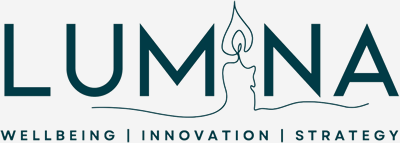In today’s landscape, stress management workshops and resilience training sessions are abundant, often touted as the key to combating workplace stress and burnout. But here’s a critical question: Are these initiatives truly enough to tackle the complex and deep-rooted issues contributing to stress and overload in the workplace?
Writing this week from the serene Maldives, I find myself reflecting on my own well being journey. This trip isn’t just a vacation—it’s part of my new strategy for personal well being. It got me thinking: What is your well being strategy? More importantly, do you even have one?
While stress management workshops and resilience training can offer some relief, they often fall short of addressing the deeper, systemic issues that drive stress in the first place. These programs might equip employees with tools to manage stress better, but they rarely get to the heart of the problem. What’s missing is a fundamental rethinking of how we approach staff well being—one that goes beyond temporary fixes and tackles the structural causes of stress.
70% of New Zealanders are experiencing burnout compared to the global 595. Studies emphasise that strong community strategy can reduce perceived stress by up to 30%, showing the tangible impact that workplace or support systems have on overall well being. Workshops or trips to the Maldives (although they are awesome) do not create the need to create networks of care within your community, whether in schools, businesses, or teams.
For real, meaningful change to occur, organisations must be willing to foster an environment where candid conversations about stress and workload can take place. This means creating spaces for introspective dialogues, where employees feel empowered to voice concerns about unrealistic expectations, heavy workloads, or insufficient support.
Dissecting the Complexities: A New Approach to well being
The reality is that many workplace stressors are embedded in the very fabric of organisational culture and processes. Workloads pile up, expectations rise, and the line between work and personal time blurs—all of which contribute to chronic stress. Addressing these issues requires more than just teaching employees how to be more resilient; it demands a willingness to dissect and rethink how work is structured and how staff well being is prioritised.
What’s needed is a shift away from quick fixes and towards long-term strategies that challenge the status quo. This involves embracing innovative, customised solutions that address the unique pressures and challenges faced by employees. By taking a holistic view of well being—considering mental, emotional, and physical health—leaders can foster environments where employees are not just surviving but thriving.
Your Story Matters: Let’s Create a Tailored well being Strategy
Many of you reading this may be familiar with my own story. But what about your story? What are the challenges you’re facing in your workplace? What steps have you taken to create a culture that truly supports staff well being? We all have a story. Perhaps this week will reflect on it.
If you’re searching for new ways to address the root causes of stress and workload within your organisation, I’m here to help. Let’s work together to define, create, and implement a version of workplace well being that’s tailored to your needs—one that fosters a healthier, more sustainable work environment.
Schedule a chat with me, and let’s start the conversation on how to redefine well being in your workplace. Send me a message or comment below.
#WellbeingStrategist #LeadershipInsights #StressToSuccess #ThrivingWorkplace
#ResilientLeadership #ExpertPerspective
